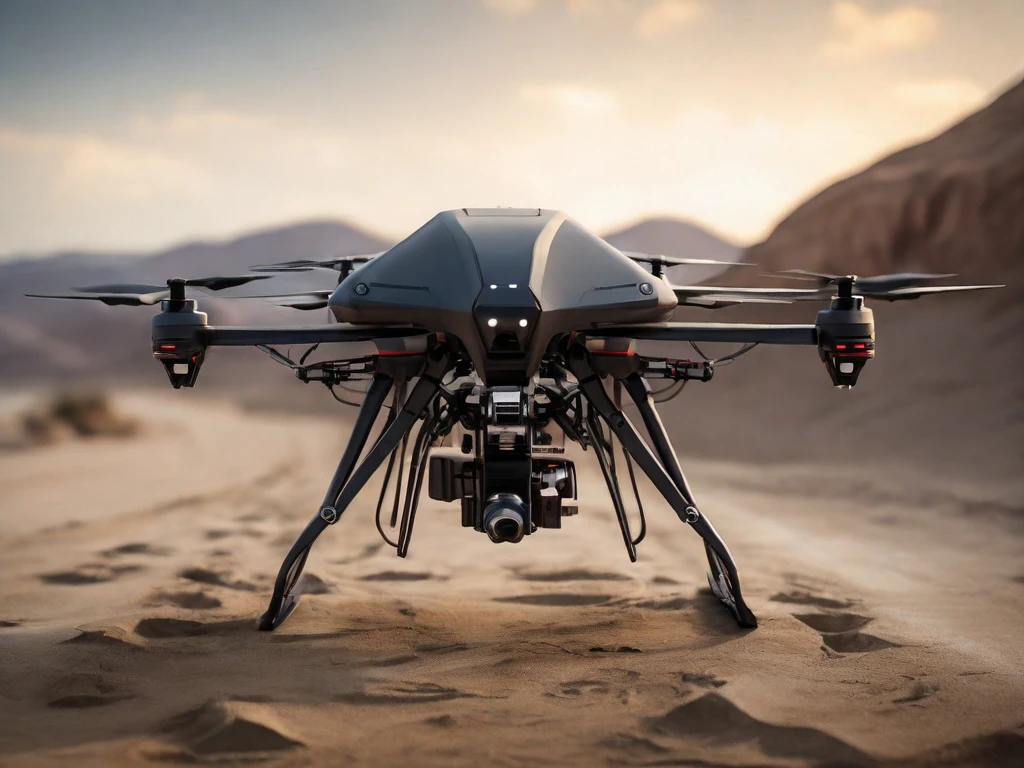In a significant move toward bolstering public safety measures, Canadian drone manufacturer Draganfly has announced a strategic collaboration with US-based robotics and AI specialist Knightscope. The partnership aims to integrate autonomous aerial platforms into existing security frameworks, offering a robust solution for surveillance and intervention.
Enhanced security capabilities unveiled
Knightscope, known for its ground-based robots and stationary emergency communication devices, will now incorporate Draganfly’s advanced drone technology into its arsenal. This integration is set to revolutionize multi-layered security operations by providing real-time monitoring, rapid response, and comprehensive post-event support.
Autonomous security drones offer unparalleled versatility and agility in adapting to dynamic security challenges. Equipped with advanced programming, these drones can patrol designated areas, follow predefined routes, and swiftly respond to alarms or incidents as they unfold. The aerial perspective they provide complements ground-based surveillance efforts, enhancing overall security measures.
Critical role in public safety and infrastructure protection
The proactive nature of autonomous drones, coupled with their ability to cover vast areas rapidly, renders them indispensable for public safety agencies, critical infrastructure protection, and private security operations. Additionally, their physical presence acts as a deterrent to criminal activities, contributing significantly to crime prevention efforts in public spaces.
Meanwhile, recent scrutiny has been directed towards the implementation of Remote ID technology in drones, shedding light on discrepancies across major manufacturers. A month-long study conducted by SkySafe, a drone tracking data firm, revealed significant variations in compliance levels among drone makers.
Skysafe findings on remote ID compliance
According to SkySafe’s research, Skydio emerges as the frontrunner in Remote ID compliance, boasting robust and accurate implementation of standard technology. Conversely, Autel faces criticism for major flaws in its Remote ID implementation, which are marked by misconfigured WiFi beacons and incorrect ASTM identifiers across its drone models.
Parrot’s Remote ID implementation, while based on WiFi beacons, falls short of compliance due to the use of legacy French DRI standards. Furthermore, the study highlights DJI’s minor issues with compliance, particularly regarding inconsistent altitude standards and recent firmware updates affecting Remote ID transmission.
Lingering non-compliance concerns
Several drone manufacturers, including SwellPro, EXO, and Yuneec, are flagged for non-compliance with Remote ID standards. While efforts are underway to rectify these shortcomings, concerns linger regarding the accountability of manufacturers and the repercussions of non-compliance for drone operators.
The Federal Aviation Administration’s extension of the Remote ID implementation deadline underscores the urgency for manufacturers to align with regulatory standards. With over 1 million registered drones in the United States alone, ensuring compliance is paramount for maintaining airspace safety and regulatory adherence.
Addressing accountability in remote ID compliance
As the debate on culpability ensues, questions arise regarding the responsibility of manufacturers to ensure remote ID compliance. With safety implications at stake, stakeholders are calling for greater accountability measures to uphold regulatory standards and safeguard public airspace.
The collaboration between Dragonfly and Knightscope heralds a new era in comprehensive security solutions, leveraging cutting-edge technology to address evolving threats effectively. While challenges persist in Remote ID implementation, concerted efforts are underway to ensure compliance and enhance safety measures across the drone industry.
The partnership between Dragonfly and Knightscope represents a significant stride towards bolstering security infrastructure through the integration of autonomous drone technology. However, the ongoing scrutiny of Remote ID compliance underscores the need for vigilance and accountability in advancing safety standards within the drone industry.





